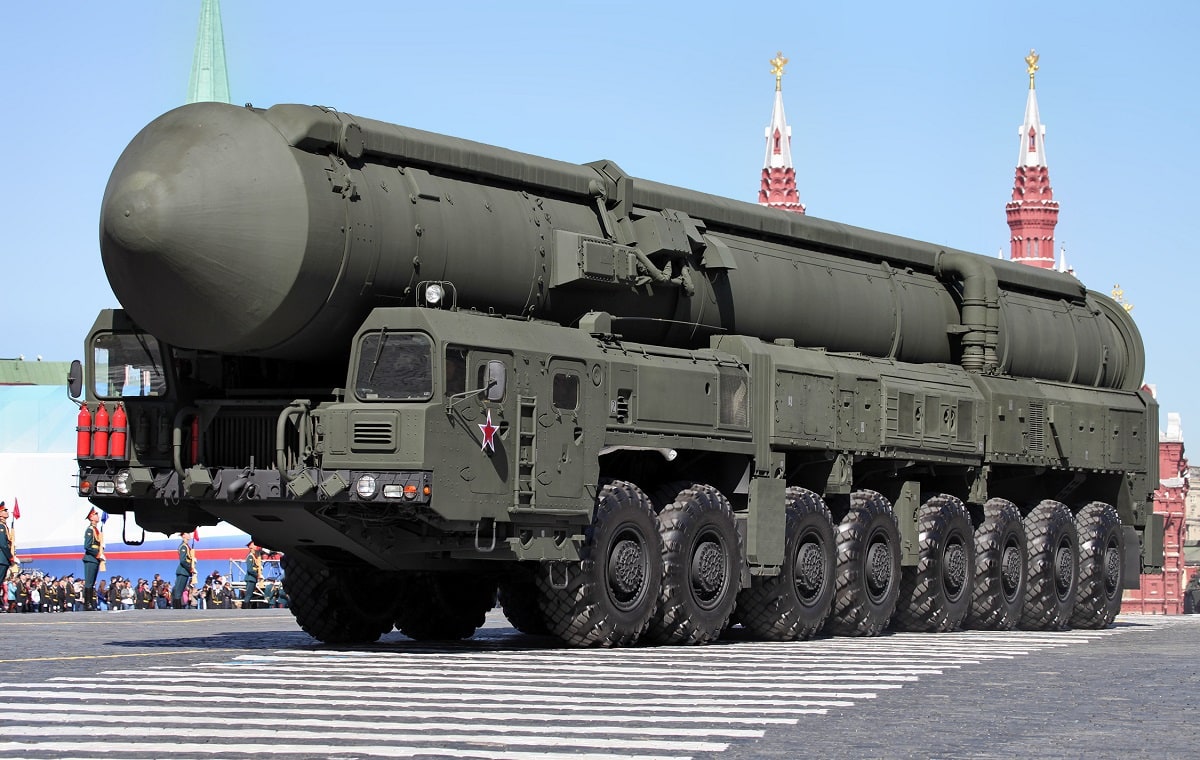It might still be July, but members of the Russian Army’s Strategic Missile Force may be experiencing a bit “cooler” weather as they’re taking part in combat patrols in the Irkutsk region in Eastern Siberia this week. The Russian Ministry of Defense reported that more than 1,000 personnel and about 100 pieces of heavy military hardware have been deployed to take part in the exercises.
“In the course of the drills, Yars road-mobile missile systems of the Irkutsk missile formation embarked on combat patrol routes,” the ministry said in a statement to Tass. “The Yars missile regiments assumed field positions and went on combat alert.”
The drills will also include the use of advanced special hardware, including materiel of engineering, defense and security, radiation, chemical and biological protection units, the ministry added.
“Overall, more than 1,000 personnel of the Strategic Missile Force and about 100 items of military hardware are engaged in the drills of the Irkutsk missile formation,” the ministry noted.
Meet the Yars
The RS-24 Yars is an improved variant of the Topol-M ICBM, equipped with at least three and as many as ten independently targetable warheads, each reportedly carrying a three hundred kiloton yield. The Russian strategic missile system comprises a mobile or silo-based solid-propellant intercontinental ballistic missile with MIRVed (multiple independently targetable vehicle) warheads.
While heavier than the Topol-M that it is replacing, the Yars is transported by the same 16 x 16 wheeled chassis. The platform takes approximately seven minutes to launch and employs a GLONASS digital inertial navigation system. Russia began to deploy the Yars ICBM systems in 2009 when the RS-24 launcher was accepted for experimental combat duty in the Strategic Missile Force.
Regional Army Drills
In recent years, the Russian military has conducted regular exercises in the Irkutsk region, including those featuring the RS-24 Yars intercontinental ballistic missile (ICBM).
The landlocked federal subject of the Russian Federation features a summer continental climate in the south, with a continental-subarctic in the northern part – and for almost half the year, from mid-October until early April, the average temperature is below 0 °C (32 °F).
This week’s drills come on the heels of a larger exercise that was conducted by the Central Military District (CMD) and involved drills in Samara, Saratov, Sverdlovsk, Novosibirsk, Irkutsk, and Krasnoyarsk. Similar exercises were also conducted in the Republic of Khakas. Those involved more than 300 pieces of military hardware and some 1,000 personnel. While the Yars was not involved in the previous drills, according to reports, the Russian military’s combat-ready exercises included the deployment of the S-300 “Favorit” and S-400 “Triumf” air defense systems.
“The personnel of air defense units and formations stationed on the territory of seven Russian regions conducted marches to new positioning areas of their combat alert, equipped basic, reserve and dummy combat positions,” the press office said in a statement, according to another report from Tass.
The Central Military District is the largest in Russia. It is based on the territory of the Volga, Urals and Siberian integrated federal districts and 29 Russian regions.
Peter Suciu is a Michigan-based writer who has contributed to more than four dozen magazines, newspapers and websites. He regularly writes about military small arms, and is the author of several books on military headgear including A Gallery of Military Headdress, which is available on Amazon.com.

